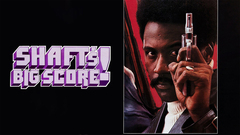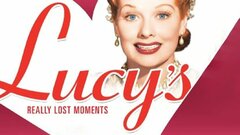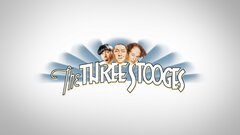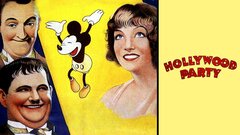With his iconic bowl haircut, quick temper and penchant for inflicting harm on his two hapless cohorts, Moe Howard was the de facto leader of The Three Stooges, one of the most beloved comedy teams of all time. Along with his brother, Shemp Howard, and Larry Fine, Moe first found fame as a member of vaudeville comedian Ted Healy's "Stooges." But it was only after younger brother Jerome - renamed "Curly" - replaced Shemp and the trio became a solo act officially known as "The Three Stooges," that they achieved massive success on a national level.
For Columbia Pictures, the Three Stooges would star in nearly 200 short films over a remarkable 24 year period. Larry, Moe and Curly became an indelible part of American pop culture. Over the course of a nearly 40-year career, there were several changes in the line-up - Curly's health problems brought back Shemp, who in turn was replaced by comedian Joe Besser, who eventually gave way to "Curly Joe" DeRita. Throughout it all, though, Moe remained the constant, keeping the Stooges on course and in the public eye, even if he had to crack a few skulls along the way.
While contemplating the mainstream appeal of the Three Stooges over the years, Moe offered this simple yet elegant explanation - "Our comedy is based from upsetting dignity." That they did - and hilarity ensued.
Born Moses Horwitz on June 19, 1897 in the Brooklyn, NY neighborhood of Bensonhurst, "Moe" was one of five sons born to Jennie and Solomon Horwitz. As a young boy, Howard sported a long, wavy flock of thick hair, in a style favored by his mother, who by most accounts had always wanted at least one daughter. Weary of the constant taunts from his classmates and unable to change his mother's opinion, the boy took matters - and a pair of shears - into his own hands. The result was the iconic "bowl cut," which Moe would maintain throughout the rest of his years.
Blessed with a keen intellect and sharp memory, Moe was a solid student in his youth and enjoyed reading his brother Jack's Horatio Alger books. Gradually, though, the lure of the theater and performing began to supplant his interest in a formal education. Before long, he was playing hooky from school in order to visit the local live theaters and entertaining Coney Island crowds with impromptu acts performed alongside older brother Samuel "Shemp" Howard. Much to his parents' dismay, Moe quit high school after just two months in order to pursue a career in entertainment.
In 1909, Moe - who went by the name of Harry in his early years as a performer - began running errands for employees at Vitagraph Studios, located nearby in Brooklyn. Rewarded for his hard work - for which he accepted no tips - the 12-year-old was given small roles in such silent shorts as "We Must Do Our Best" (1909) and "Fish Hookey" (1910). Always on the lookout for opportunities, Moe joined his friend Ted Healy on a summer job performing as one of famed aquatic star Annette Kellerman's "diving girls" in 1912.
During the same period, Moe and Shemp had been performing their evolving act anywhere they could. For a time, they sang as part of a quartet at nearby Sullivan's Saloon - until their father put a stop to the late-night performances - and later joined a theatrical troupe aboard the river showboat Sunflower. For several years Moe and Shemp toured the country, even managing to pull double duty, simultaneously working on the competing Leow's and RKO vaudeville circuits. An unheard of feat at the time, Moe and his brother managed it by employing a blackface minstrel show for their work at the RKO venues.
Late in 1922, Moe reconnected with his old pal Healy, who by then was a well-established vaudevillian. In need of a replacement for his act, Healy enticed Moe and his brother to join him on stage in a largely improvised routine that found Shemp heckling Moe from the audience. The crowd loved it and the brothers soon joined their associate in an act initially known as Ted Healy and his Racketeers, but later altered to Ted Healy and his Stooges.
Upon seeing talented violinist-comedian Larry Fine perform his vaudeville act one night, Healy invited the frizzy redhead with the balding pate to become his third Stooge. Having recently married, Moe made a brief, half-hearted attempt at living a normal life, but soon returned to the Stooges and a successful run on the vaudeville circuit throughout the remainder of the 1920s. In 1929, Healy and the boys made their Broadway debut in the popular musical revue, "A Night in Venice," followed by their first film appearance as a team in the Rube Goldberg comedy, "Soup to Nuts" (1930), in which the elder Shemp was clearly the Stooge in charge, as Moe had yet to assume his authoritative role in the act.
Almost immediately after completing "Soup to Nuts," Shemp - tired of Healy's drinking and often abusive behavior and his own yearning for a solo career - left the group. In need of a third Stooge, Moe quickly suggested his younger brother, Jerome. Healy, however, was unimpressed, stating that Jerome's handsome mane of auburn hair and bushy mustache made his appearance decidedly unfunny. Desperate to join his brother, Jerome quickly dashed to the nearest barber and had his head and face shaved clean. Deemed appropriately "funny looking" by Healy, Jerome was quickly made a Stooge and given the suddenly ironic nom de guerre of "Curly."
A contract with MGM followed, with Moe and the boys livening up the proceedings in several films with Healy and such MGM stars as Clark Gable and Joan Crawford. Eventually, Healy ventured on to a solo career, leaving Larry, Moe and Curly free to sign with Columbia Pictures, where the trio would make no fewer than 190 "two-reel" short films between 1934 and 1958. The first of the official Three Stooges films was the musical novelty short, "Women Haters" (1934), in which the boys - as characters NOT called Larry, Moe and Curly for the only time - hilariously tried to resist the charms of the fairer sex.
Though still in an early form, all the iconic Stooge comedy bits were present in "Women Haters" - the eye pokes and exaggerated sound effects, even Curly's signature laugh, "Nyuck, nyuck, nyuck."
That same breakout year marked several other "first and only" slapstick milestones for Moe and his siblings. "Punch Drunks" (1934) - in which Curly is exploited in the boxing ring after Moe discovers that he flies into an uncontrollable rage whenever he hears "Pop Goes the Weasel" - was the only effort crediting all Three Stooges as writers. The first romp to feature the catchphrase, "Calling Dr. Howard, Dr. Fine, Dr. Howard," the short, "Men in Black" (1934) was also the only Stooge film to be nominated for an Academy Award for Best Short Subject.
With Moe firmly established as the short-tempered, comically abusive leader, the Three Stooges enjoyed a surge in popularity during these halcyon years with Columbia. While youngsters were reduced to giggling hysterics by the Stooges particular brand of violent physical comedy, parents were notoriously wary of the material, fearing their impressionable children might imitate the trademark eye gouges or nose pinches. Truth, be told, the onscreen rough-housing occasionally did result in a cracked rib or skull for the committed comedians.
The 1940s and America's entry into World War II provided the Three Stooges with one of their easiest targets ever: Adolph Hitler. Moe caricatured the Nazi dictator for the first time as the puppet leader of the country "Moronica" in the side-splitting satire, "You Nazty Spy!" (1940). They took more swipes at the Axis powers to hilarious effect in consequent shorts like, "I'll Never Heil Again" (1941) and "They Stooge to Conga" (1943).
In contrast to the never-ending hardships the trio comically faced on screen, real-life tragedy struck when immediately after filming "Half-Wits Holiday" (1947), Curly suffered a debilitating stroke that forced him to retire from show business. Optimistic as they were, Moe and Larry hoped that Curly's withdrawal would be a temporary one and convinced a reluctant Shemp to rejoin the group until such time as their younger brother felt well enough to return. Unfortunately, the recuperation never came. Other than a brief cameo in "Hold That Lion" (1947) - featuring the only scene in which Moe, Larry, Shemp and Curly all appeared onscreen together - Curly never performed again. After a series of strokes that left him increasingly infirmed, the youngest Stooge died in a nursing facility in 1952 at the all-too-young age of 48.
With Curly's temporary leave of absence quickly becoming permanent, Moe convinced Shemp to remain with the Stooges, despite the latter's desire to maintain a solo career. Although Curly would forever remain a favorite with fans of the Stooges, the group continued to enjoy substantial popularity throughout the remainder of the 1940s and well into the next decade, with memorable shorts like "I'm a Monkey's Uncle" (1948) and "Corny Casanovas" (1952).
Then, in a one-two punch of tragedy, a mere three years after Curly's passing, Shemp died from a heart attack in 1955 after appearing in more than 70 shorts with Moe and Larry. The heartbreak of losing his two brothers proved almost too much for Moe, who seriously considered ending the act permanently. While Moe contemplated what to do next, the final few films scheduled with Shemp were cobbled together using existing footage of the older Stooge and stand-in Joe Palma - referred to as "Fake Shemp" in Stooges lore - for efforts like "Rumpus in the Harem" (1956) and "Commotion on the Ocean" (1956).
With a few more years left on their contract with Columbia, Moe ultimately decided to recruit portly comedian Joe Besser to come aboard as the third Stooge. For most fans, this period of the classic Three Stooges was by far the worst. Besser, a talented comedian in his own right, had a whining delivery that did not sit well with established repartee of the previous era. Furthermore, the short-subject department was being downsized at Columbia, resulting in increasingly rushed production schedules and more dependence on recycling footage and storylines from earlier films.
Besser contributed to 16 shorts alongside Moe and Larry, until Columbia chose not to renew their contract in late-1957, unceremoniously ending a 24 year relationship - the longest of any comedy group in movie history. Though Moe was the de facto business manager for the Stooges, and managed his own money wisely, he unfortunately failed to parlay the group's popularity into higher paychecks. Paid a substantial $20,000 per month when they began their stay at Columbia, they were making the exact same salary a quarter of a decade later, due in large part to Harry Cohn, the notoriously miserly head of Columbia at the time. Additionally, other than their monthly pay, the boys never received an additional penny in royalties, even as the shorts aired constantly on television in the decades that followed their heyday.
With no contract in hand and Besser leaving the group soon after their firing, Moe was at last ready to concede to retirement. However, Columbia began releasing the Stooges vast catalogue of short films in syndication on television. Moe was shocked to see a sudden resurgence of interest in his old comedy team. Intending to give audiences one last peek at the Stooges, Moe recruited comedian Joe DeRita to join them for a live, one-night farewell performance.
When the show sold-out, they quickly signed DeRita - dubbed "Curly Joe" - up full time and went back to the studio. Moe and his latest roster of Stooges went on to star in six full-length features, beginning with the space romp, "Have Rocket - Will Travel" (1959) and ending with "The Outlaws is Coming!" (1965). As popular as ever - admittedly now more as kitsch than contemporary comedy - the Three Stooges could be seen in cameo appearances in major films and on television specials. Their goofy visages even adorned lunch boxes and comic books. Moe and the boys recorded dozens of live-action skits that bookended the regular segments of their own cartoon series, "The New 3 Stooges" (syndicated, 1965-66). But as fond as America still was of their beloved Stooges, it became increasingly clear that age was catching up with Moe and Larry, as their pacing slowed and the physical comedy, once so kinetic and brutal, had been reduced to little more than a playful tussle amongst old men.
Moe, Larry and Curly Joe made one last memorable appearance as the "Three Men in a Tub" in an episode of the primetime children's fantasy show, "Off to See the Wizard" (ABC, 1967-68). Despite their advanced ages, Moe continued to look for more ventures for the Three Stooges, leading them to try once again to get a weekly television series off the ground.
Although earlier small screen efforts - "Jerks of All Trades" (1949) and "The Three Stooges Scrapbook" (1960) - had failed to bear fruit, the trio went to bat for a third time with "Kook's Tour" (1970), a pilot for an intended series that would feature the Stooges gallivanting around the globe and causing general chaos. Plans were scrapped, however, after Larry suffered a debilitating stroke that paralyzed the entire left side of his body shortly after filming the unaired program. Even then, Moe considered continuing the act by replacing Larry with longtime Stooge supporting player, Emil Sitka, but it was not to be.
Following a series of strokes, Larry Fine died in January 1975. Moe, who had been writing an autobiography at the time, was diagnosed with lung cancer and followed Fine when he died at the age of 77 on May 4, 1975. Although the Three Stooges were no more, their legacy would live on in countless references and imitations in film and on television for decades to come. One such homage came with the feature film, "The Three Stooges" (2012), a slapstick comedy directed by the Farrelly Brothers and featuring Sean Hayes, Chris Diamantopoulos and Will Sasso as Larry, Moe and Curly, respectively.
By Bryce Coleman







































































![CAPTAIN HATES THE SEA, THE, Moe Howard, Larry Fine, Curly Howard [The Three Stooges], 1934](https://media.baselineresearch.com/images/422118/422118_small.jpg)
![FOUR FOR TEXAS, Larry Fine, Moe Howard, Joe De Rita [The Three Stooges], 1964](https://media.baselineresearch.com/images/415525/415525_small.jpg)



![GOLD RAIDERS, THE, Moe Howard, Shemp Howard, Larry Fine [The Three Stooges], 1950](https://media.baselineresearch.com/images/413834/413834_small.jpg)
![IT'S A MAD MAD MAD MAD WORLD, Joe De Rida, Moe Howard, Larry Fine [The Three Stooges], 1963](https://media.baselineresearch.com/images/409856/409856_small.jpg)







![HAVE ROCKET WILL TRAVEL, from left: Larry Fine, Moe Howard, Joe DeRita [The Three Stooges], 1959](https://media.baselineresearch.com/images/374476/374476_small.jpg)
























![HAVE ROCKET, WILL TRAVEL, Larry Fine, Moe Howard, Joe De Rita [The Three Stooges], 1959](https://media.baselineresearch.com/images/126012/126012_small.jpg)
![HAVE ROCKET, WILL TRAVEL, Curly Joe De Rita, Larry Fine, Moe Howard [Three Stooges], 1959](https://media.baselineresearch.com/images/126011/126011_small.jpg)




























